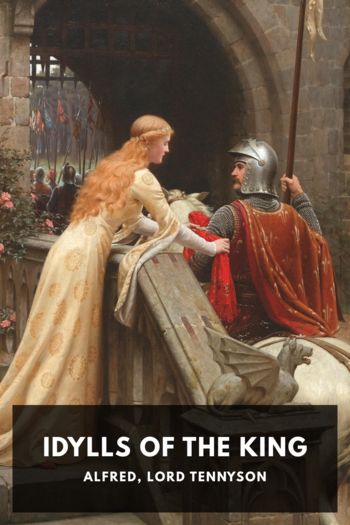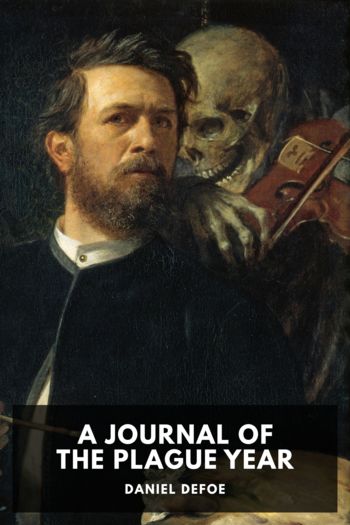Selkirk's Island, Diana Souhami [the best books to read TXT] 📗

- Author: Diana Souhami
Book online «Selkirk's Island, Diana Souhami [the best books to read TXT] 📗». Author Diana Souhami
But more than this unmysterious market garden, his true storehouse was the wreck of the ship from which he escaped. From it, he retrieved all he needed for civilised life. Its contents rivalled that of a fleet of prize ships. It was astonishing what was spared by the sea as high as a hill and as furious as an enemy.
He made a raft and salvaged supplies for more than a lifetime: gallons of liquor (enough for twenty-eight years), chests of bread, rice, cheeses, dried meat and corn, barrels of tobacco, flour and sugar, cables, hawsers, carpentry tools, barrels of gunpowder, quantities of ammunition, pistols, swords, two dozen hatchets, a grindstone, crowbars, bags of nails, clothes, hammocks, bedding, sails, rigging, canvas, ironwork, scissors, knives, forks, pens, ink, paper, compasses, mathematical instruments, charts, books on navigation, a ‘perspective glass’, three bibles and some Portuguese prayer books.
Thus supplied, he insulated himself against his fictional island. He was gentrified, with a ‘country seat’, a bower, kitchen, orchard and winter stores. He was ‘removed from all the wickedness of the world … the lust of the flesh, the lust of the eye, the pride of life.’ No goat fucking for Crusoe. Like Selkirk he went barefoot, but unlike Selkirk he had scissors with which to cut his hair and beard, and shape his moustache into ‘Mahometan whiskers’.
He ate raisins for breakfast, broiled goat for lunch and turtles’ eggs for supper. He built huts and a barn for his corn. He made tables and chairs, hollowed a canoe, made an umbrella, wove ‘an abundance of necessary baskets’, tailored breeches and waistcoats and fashioned a hat. He made a goatskin belt to carry his hatchet, saw and guns, and he made very good candles out of goats’ tallow. He caged a parrot and called it Poll; it spoke his name.
No man could have applied himself more. His production was extraordinary, and it was all for himself. He resisted solitude by keeping busy. His activity went way beyond need. It was an addiction. He built things, made things, fixed things. He no more wondered at the stars or considered the lilies than does a dog. He believed in God as Creator and Arbiter, was reassured to read in one of his Bibles ‘Call on Me in the day of trouble and I will deliver,’ and then gave sublime attention to the ordinary. Untroubled by sex, grief, abandonment and the complexity of life, his twenty-eight years alone on a volcanic island passed on the level of the husbandry and carpentry of the day.
Two hundred years after Robinson Crusoe’s creation, in a celebratory essay, the novelist Virginia Woolf described Crusoe’s mundanity as a virtue. Defoe, she wrote, kept to his own perspective:
There are no sunsets and no sunrises; there is no solitude and no soul. There is, on the contrary, staring us full in the face, nothing but a large earthenware pot.*
Crusoe’s pots were of fireproof clay. He cooked meat and fish and broth in them. He made clay ovens too, in which he baked barley loaves, rice cakes and puddings.*
With all his provisions and things, and with God, the parrot and a goat for company, he reflected, as did Selkirk, that he was happier in isolation than with ‘the wicked, cursed, abominable life of earlier days’. He had also retrieved a parcel of money from the wreck, which prompted him to preach aloud:
O drug, what art thou good for? Thou art not worth to men, no, not the taking off of the ground … Alas! There the nasty, sorry, useless stuff lay; I had no business for it.
What he had instead, were the convenient things that money might purchase. And when, after twenty-three years alone, he found first the print of a bare foot in the sand, and then the man who made it, his dominion was complete:
I made him know his name should be Friday, which was the day I saved his life … I likewise taught him to say master, and then let him know that was to be my name.
Friday was twenty-six, strong, tall and manly. He was olive coloured (not too dark) with black straight hair and fine white teeth. Crusoe made an Englishman of him. He forbade him to eat human beings, tailored linen drawers for him and a jerkin and cap and ‘instructed him in the knowledge of the true God’:
I told him that the great Maker of all things lived up there, pointing up towards heaven; that He governs the world by the same power and providence by which He had made it; that He was omnipotent, could do everything for us, give everything to us, take everything from us; and thus, by degrees, I opened his eyes. He listened with great attention, and received with pleasure the notion of Jesus Christ being sent to redeem us, and of the manner of making our prayers to God, and His being able to hear us, even into heaven.
So, for Crusoe, he had the company of a slave, God was all consoling, and there were many jobs to be done. Abandonment was not abandonment at all. And as for the scarlet shafts of sunrise, they passed him by.
1720 My Said Wife Frances
WOMEN WERE of passing interest to Selkirk and Crusoe. There was none on their respective islands. Crusoe found his ideal relationship with a male slave. Selkirk made do with goats.
Back in society the terms differed. A man was not a man without a wife. Crusoe married when he returned to England at the age of fifty eight and after a voyage that had lasted thirty-five years. So as not to slow the narrative, his insignificant wife mothered three children then died, all in the same paragraph.
Nor did Selkirk find a sense of home through marriage. It took a ship, an ocean and a can of flip, to define the work of a day. Women were shadowy creatures, black nymphs, angels, tarts and Jezebels,





Comments (0)